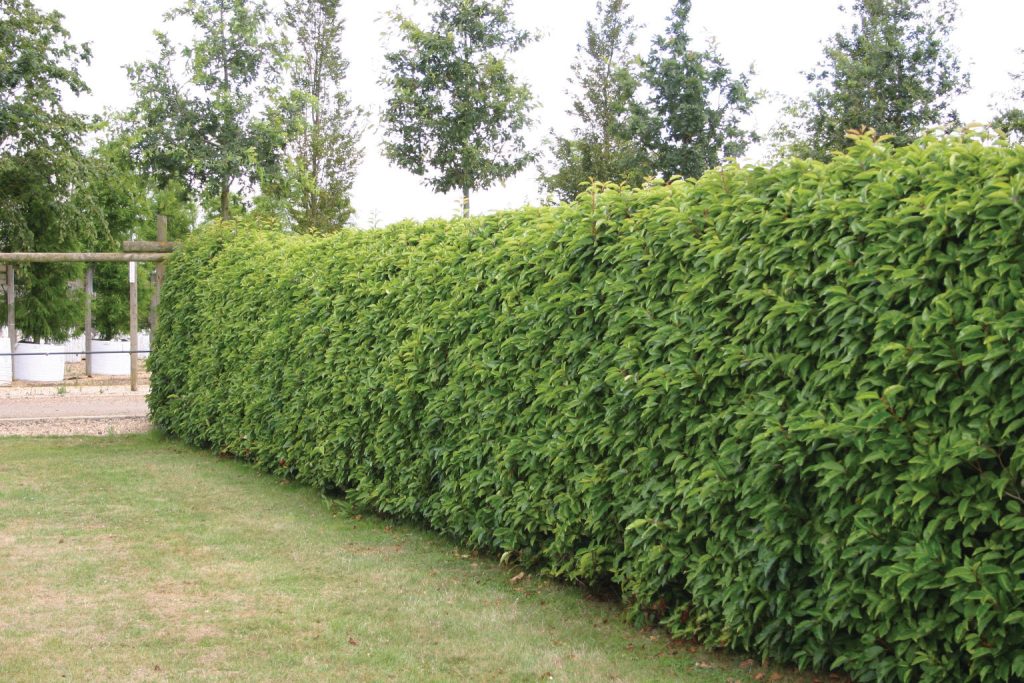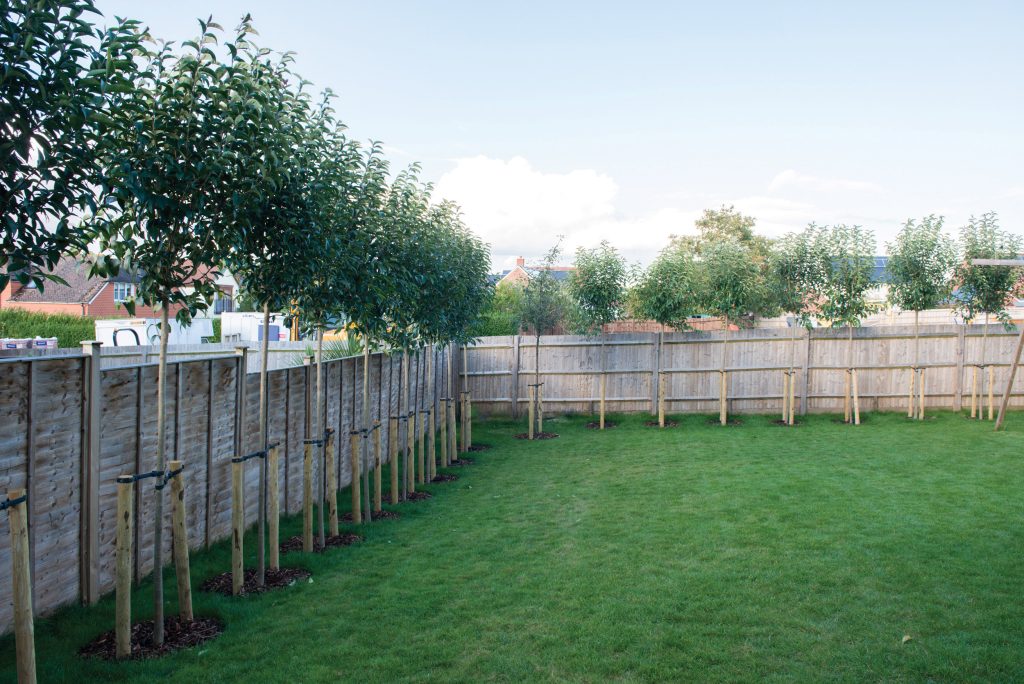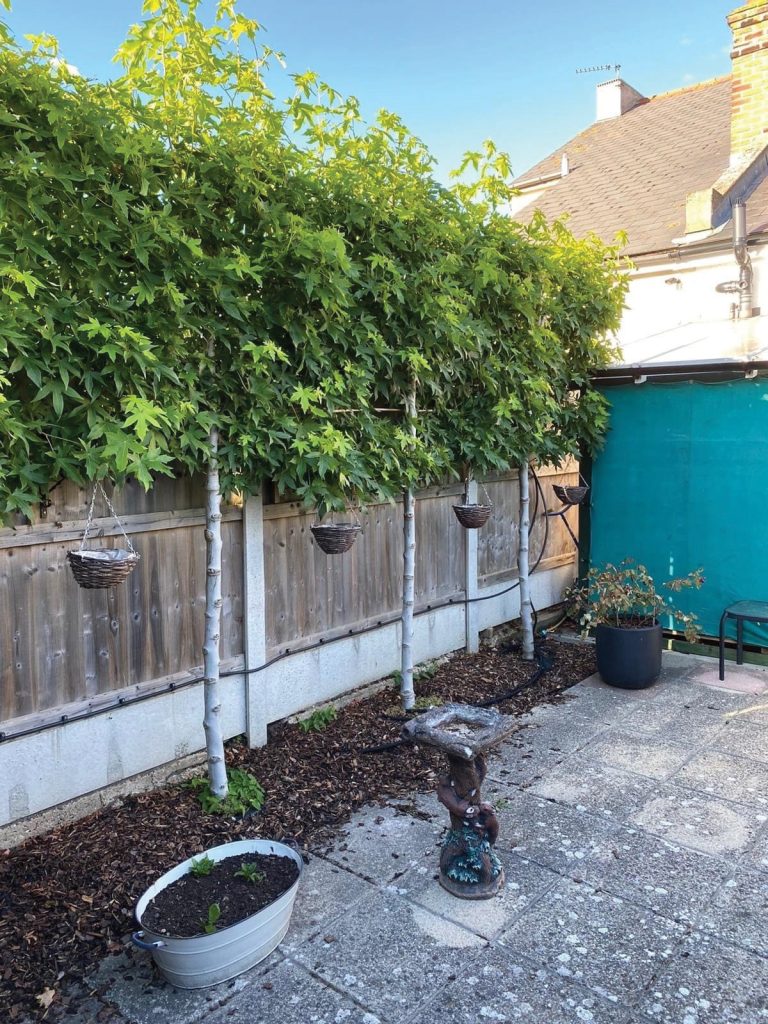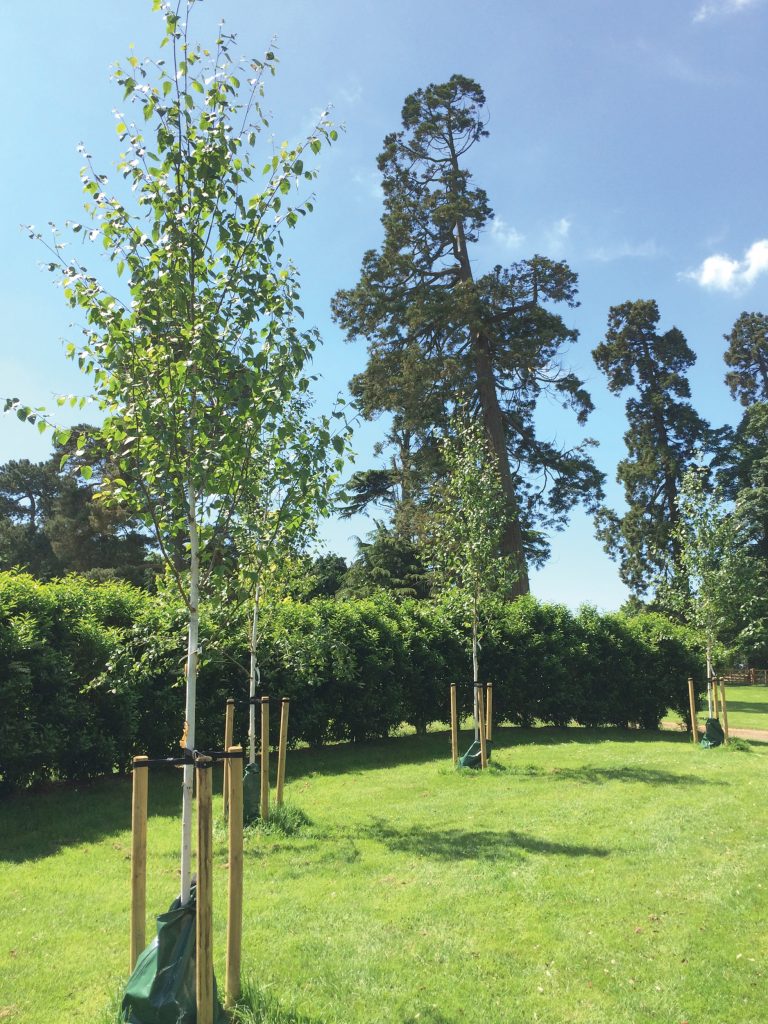How to buy screening trees
On the most part we all strive to have an amicable relationship with neighbours, however sometimes the stresses of modern day living can make this difficult, especially in situations where the traditional separation of boundaries using trees or high hedges is absent.
In such situations, it is hard not to feel exposed and this causes people to seek to solve this problem by erecting fencing as a barrier, or alternatively seek to introduce privacy back into their living space with privacy trees for screening. Trees are the perfect way to achieve natural privacy in your garden and they can be used in numerous ways to achieve a good level of screening.
This article assesses the options available for privacy trees and their relative restrictions and merits.

1. Traditional hedge
There are a few trees that can be planted very close to one another to form a hedge. Hedging trees will be supplied with branching right down to the base and can be either deciduous or evergreen, depending on your requirement.
For example Beech, Fagus sylvatica, can be used to form a very effective hedging screen, yet it is a deciduous tree. Cherry Laurel, Prunus laurocerasus Rotundifolia, is a good evergreen choice for an instant hedge as specimens are vigorous and dense thus giving good coverage from the offset.
Benefits: Good for lower level screening and defining boundaries.
Restrictions: This form of screening will need some regular routine maintenance.
Other options: Hornbeam (Carpinus betulus Fastigiata), Holm Oak (Quercus ilex)
2. Stilted hedge (Raised screen)
A stilted hedge uses trees that have been specifically produced with this purpose in mind. These trees will have a clear stem to reach up to fence panel height of around 1.8-2m and then a crown forming above this height.

Generally evergreens are preferred for this purpose and can be planted densely to achieve maximum effect from the offset. One of the most successful and cost effective choices for stilted hedging is the Tree Privet, Ligustrum japonicum. Tree privet often gets over looked as a raised screening tree due to the fact people tend to assume they can only be grown in a classic hedge style but it is fantastic value for money and gives a superb effect.
Benefits: High level evergreen screening, without encroaching on your leisure space. This option is particularly useful if you are overlooked by your neighbour’s property, or would like to retain lower level exposure i.e. of an attractive wall or area.
Restrictions: This form of screening will need some regular routine maintenance.
Other options: Photinina (Photinia Red Robin), Standard Laurel (Prunus laurocerasus Novita), Variegated Privet (Ligustrum lucidum Excelsum Superbum)

3. Pleached trees
If you would like a formal look, you can also use pleached trees to create the effect. Pleached trees are trained on bamboo frames, creating flat panels which can sit above your wall or fence.
Commonly used for this:
Photinia x fraseri Red Robin, Carpinus betulus, Liquidambar styraciflua Worplesdon and Malus varieties.
4. Dappled/staggered screening
Sometimes, a distraction to detract the eye from what is behind is just as good.
Deciduous trees can be planted in a staggered formation to give a lighter screen, still allowing light through the trees canopies depending on your species choice.

You can achieve a good visual effect by not planting trees in a straight line and placing them in a ’zig-zag’ formation. Most
trees can be used in this way.
Commonly used for this:
Betula utilis Jacquemontii, Pyrus calleryana Chanticleer.
At Barcham Trees we have a team of arborists dedicated to giving advice and recommendations, so feel free to email us photo’s or your site or privacy problem or call on 01353 720 950.
So, don’t be distracted by unsightly views, or nosey neighbours, at Barcham we can provide you with the solution to your privacy problems with screening trees. Let us help you to cover up the natural way!
